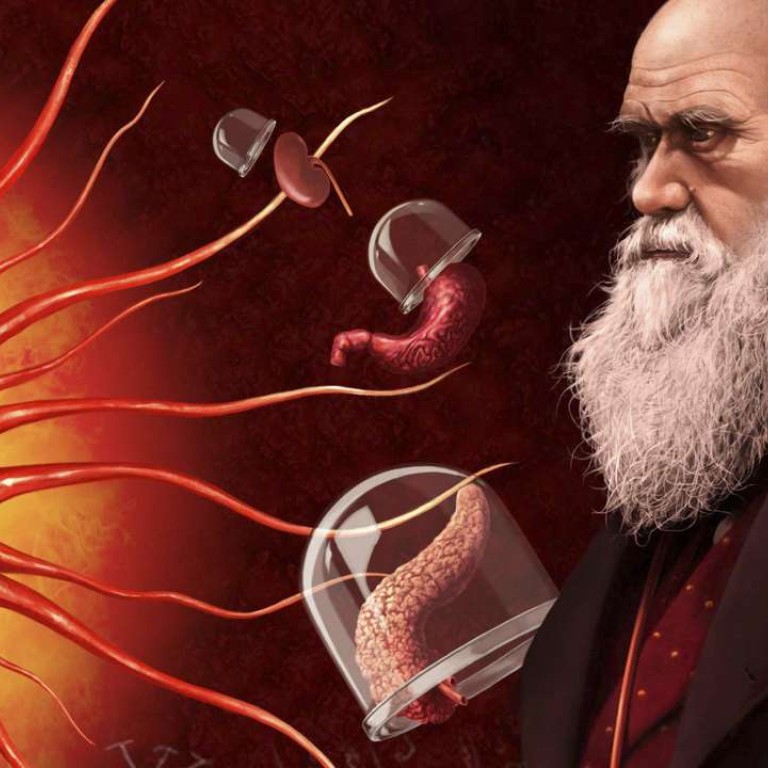
Evolution may play large role in why some cancers are more common than others
Heart tumours are rare compared with colon, lung, breast, liver, prostate cancers. Some researchers believe that cell division rates and natural selection pressures influence this
When it comes to cancer, you often hear about the colon, lung, breast, liver, prostate, stomach or skin (those are the top seven cancers in Hong Kong), but what about the heart? What makes cardiac tumours so rare?
An international team of researchers in an opinion piece recently published in the journal Trends in Cancer, propose that this resistance – and conversely vulnerability – to cancer in some organs may be due to natural selection.
Corresponding author Frederic Thomas, an evolutionary biologist at the Centre for Ecological and Evolutionary Cancer Research in France, explains that organs that are the most important to keeping us alive and capable of reproduction, such as the heart, brain or uterus, may enjoy a better protection against cancer, all other things being equal. Organs that are large or paired, and thus can maintain function even when a relatively large tumour is present, will be less subject to anti-cancer selection forces.
“We are not saying that this is the main factor to explain the different susceptibility of organs to cancer,” says Thomas, “but it is a factor that contributes with others.”
The researchers’ evolutionary theory supplements current understanding. Many oncologists have explained the difference in rates of organ cancer by looking at either external risk factors, such as smoking, alcohol or UV light exposure, or internal factors, such as how often cells must divide in an organ.
In a paper published in January 2015 in Science, cancer researchers Cristian Tomasetti and Bert Vogelstein suggest the total number of stem cell divisions per tissue type could explain two-thirds of the variation in cancer risks. Organs with high rates of cellular division are simply more likely to carry cancer-causing mutations, and thus subject to “bad luck”.
Thomas and colleagues note that while the cell turnover rates of endothelial and mesenchymal cells in the heart are approximately 15 per cent and 4 per cent per year respectively, and the annual striatal neuronal turnover in the brain is approximately 2.7 per cent; the intestinal epithelium completely self-renews approximately every five days.

Experts from the University of Hong Kong’s Department of Pathology, reporting in the October 1993 issue of Archives of Pathology and Laboratory Medicine, analysed 12,487 autopsies performed in Hong Kong from 1972 to 1991 at Queen Mary Hospital. They found seven cases of primary and 154 cases of secondary cardiac tumours during the 20-year period, which translates to an autopsy incidence for primary and secondary heart tumours of 0.056 per cent and 1.23 per cent respectively.
According to Dr Robert James Cusimano, a cardiac surgeon at the Peter Munk Cardiac Centre at Toronto General Hospital, malignant heart tumours are most often due to cancer spreading from primary tumours in nearby organs, such as the kidneys or lungs. “If there are metastases to the heart, the prognosis is pretty bad,” says Cusimano in an article on the US National Cancer Institute website.
The extreme rarity of heart cancer makes it difficult to study how and why cardiac tumours arise or how best to treat them. Thomas and colleagues, however, are working to test their hypothesis.
Currently, the team is running a long-term experiment with mice to measure the accumulation of cancerous and precancerous mutations inside different organs. The research is part of a new international collaboration between Deakin University in Australia and the French National Centre for Scientific Research (CNRS).
“It’s a novel hypothesis that deserves to be explored,” says Thomas. “We hope this paper will stimulate research in that direction.”

